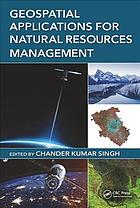Smart Geospatial Practices and Applications in Local Government 1st Edition by David Holdstock ISBN 1351680595 9781351680592
$50.00 Original price was: $50.00.$25.00Current price is: $25.00.
Smart Geospatial Practices and Applications in Local Government 1st Edition by David A. Holdstock – Ebook PDF Instant Download/Delivery: 1351680595, 978- 1351680592
Full download Smart Geospatial Practices and Applications in Local Government 1st Edition after payment

Product details:
ISBN 10: 1351680595
ISBN 13: 978-1351680592
Author: David A. Holdstock
The demand on local government to do more with less by improving operations, increasing productivity, and making better and more informed decisions increases constantly. On a departmental level Geographic Information Systems are helping meet this demand but the majority of local government organizations do not take the time to understand the GIS needs and opportunities of each and every department.
This book:
- Discusses how towns, cities and counties and their specific departments should actually use GIS
- Explains the best ways to use GIS tools through many specific case studies and step by step instructions
- Emphasises local government needs first before offering solutions
- Gives readers a practical and understandable way of thinking about managing and making GIS successful
This book is the guide that details best GIS applications and practices for the 34 departments in local government that can, and should, use GIS technology. It explains in details how, why, and what each department should implement, a clear and understandable explanation of departmental GIS.
Smart Geospatial Practices and Applications in Local Government 1st Table of contents:
1. Introduction
- History and Evolution of GIS: This section traces the history and maturation of GIS from its inception to its current role in local government. It highlights key stages of GIS development, including the roles of GIS professionals, managers, and coordinators, culminating in the rise of Geographic Information Officers (GIOs) in the 2020s.
- GIS in Local Government: The section discusses how GIS has evolved in local government departments, emphasizing its growing importance in areas like smart cities and sustainable governance. It introduces a framework for GIS sustainability and maturity through six stages, from adoption to the creation of smart and sustainable cities.
- Questions for the Future: Reflects on the potential paradigm shift in GIS and the future of geospatial organizations. It discusses concepts like smart, resilient, sustainable, and high-performance geospatial organizations, and introduces the idea of business realization planning.
2. Smart Geospatial Technology Standard Practices, Activities, Procedures, and Protocols in Local Government
- Introduction to Smart Practices: This section explains the importance of standardized practices and protocols for smart GIS applications in local government. It outlines key pillars necessary for creating effective GIS frameworks within governmental structures.
- Pillars of Smart Practices:
- Smart Governance: Discusses future GIS governance models, emphasizing hybrid-regionalized structures and the challenges they present.
- Smart Data and Databases: Focuses on the importance of managing and integrating geospatial data effectively.
- Smart Procedures and Workflow: Examines how interoperability and streamlined workflows can enhance the efficiency of GIS systems.
- Smart Software and IT Infrastructure: Focuses on the technological tools, systems, and IT infrastructure necessary for supporting a smart GIS ecosystem.
- Smart Training and Knowledge Transfer: Stresses the need for continuous education and knowledge management within GIS teams to ensure long-term sustainability.
3. A Geospatial Technology Ecosystem: A System of Systems
- The Local Government Smart City Vision: This section explores the concept of the “smart city” and the technologies that will shape its development. It examines how local governments are shifting towards a more integrated, interoperable GIS ecosystem to address complex urban challenges.
- Integration Opportunities: Looks at how different local government departments, software, and databases can be aligned to meet the goals of smart cities, particularly through GIS integration. It also discusses how GIS can contribute to achieving local government vision and objectives.
- Future Geospatial Systems: The section anticipates the evolution of geospatial science and technology in the context of government operations, positioning GIS as central to the success of future smart cities.
4. Performance: High-Performance Organizations (HPO)
- What Makes an HPO?: Introduces the concept of High-Performance Organizations (HPOs), discussing the five key factors that define them, including strategy, innovation, and adaptability.
- High-Performance Geospatial Organizations (HPGO): Explores the specific factors that contribute to high performance in geospatial organizations, such as organizational structure, governance, team dynamics, and leadership.
- Key Success Factors: Details the factors that determine success in HPGOs, including a clear vision and goals, flexibility in adapting to changing technology, and continuous innovation.
5. Value: Business Realization Planning
- The Importance of GIS Benefits: This section argues that understanding and measuring the benefits of GIS in local government is crucial for long-term success. It introduces Benefits Realization Planning as a necessary strategy for local governments to ensure that GIS investments deliver tangible value.
- Case Studies of GIS in Local Government: Provides case studies from telecommunication projects like Greenlight, highlighting the measurable benefits GIS brings to sectors such as customer service, network planning, and market analysis.
6. Culture: Sustainability and Resilience
- Promoting Sustainability and Resilience: Discusses how local governments are using GIS to promote sustainability and resilience in their communities. It explores the importance of these values in urban planning and governance.
- Case Study: A case study of the City of Hobart’s Sustainable Neighborhood Plan illustrates how geospatial technology can contribute to creating sustainable and resilient communities.
7. Applications in Local Government: A Smart Geospatial Ecosystem
- Smart GIS Applications: This section focuses on the various applications of GIS in local government, from parks and recreation management to natural resource planning. It emphasizes the need for GIS solutions that are integrated, scalable, and adaptable to a wide range of government functions.
- Case Study in Parks and Recreation: A detailed look at how GIS is used in managing parks and recreation resources, analyzing social equity, understanding community needs, and supporting strategic and sustainable management.
- Business Realization in Smart Parks: Explores how GIS technology is integral to realizing business value in initiatives like smart park management, enhancing both operational efficiency and service delivery.
8. Conclusion
- Summing Up: The conclusion ties together the themes of GIS performance, value, culture, and applications in local government. It emphasizes the future of GIS as integral to smart city development, sustainability, and resilience, positioning geospatial technology as a key enabler of high-performance governance.
People also search for Smart Geospatial Practices and Applications in Local Government 1st :
smart spatial monitoring and reporting tool
uses of geospatial technology
geospatial application
geospatial data management research progress and future directions
disadvantages of geospatial technology
Tags:
David Holdstock,Smart,Geospatial,Practices,Applications,Local,Government 1st
You may also like…
Computers - Applications & Software
Politics & Philosophy - Government & Politics
Local Government and Urban Governance in Europe 1st Edition Carlos Nunes Silva
Politics & Philosophy
Politics & Philosophy
Local Government in England : Centralisation, Autonomy and Control 1st Edition Colin Copus
Engineering
Computers - Networking
Politics & Philosophy - Social Sciences
Contracting for Services in State and Local Government Agencies Second Edition Curry
Computers - Computer Science
Natural Language Processing for Global and Local Business 1st Edition Fatih Pinarbasi












